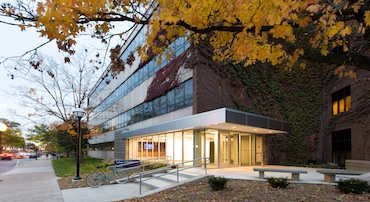Dr. Steven Erickson Published in Journal of the American Pharmacists Association

Dr. Steven Erickson was recently published in the Journal of the American Pharmacists Association (JAPhA). The article, entitled ‘Services provided by community pharmacies in Wayne County, Michigan: A comparison by ZIP code characteristics,’ showcases the disparities in poorer and more African American ZIP codes in Wayne County in terms of price of medication, hours of pharmacies being open for business, and offering of immunizations.
The Journal of the American Pharmacists Association is the official peer-reviewed journal of the American Pharmacists Association (APhA), providing information on pharmaceutical care, drug therapy, diseases and other health issues, trends in pharmacy practice and therapeutics, informed opinion, and original research.
Dr. Erickson is currently Associate Professor of Social and Administrative Sciences at the U-M College of Pharmacy. Dr. Erickson received his Bachelors of Pharmacy from Ferris State College in 1980 and his PharmD from Wayne State University in 1984. His research interests include medication adherence, quality of prescribing, spatial and geographic associations between medication availability and patient outcomes, and more recently, the safe and effective use of medications by people with disabilities.
This study raises a number of issues.
1.Immunization programs are not provided by very many pharmacies in the lower income ZIP codes or ZIP codes that have a higher proportion of population being minorities. The people living in these areas may have access to other sources of immunization such as federally qualified health centers, but pharmacies do not appear to be a major provider in these areas.
2.Pharmacies are open for business fewe hours per week in lower income ZIP codes as well as ZIP codes with a greater proportion of minority residents, potentially reducing the access to prescription medications as well as to the expertise of the pharmacist.
3.The findings are related to the potential out-of-pocket cost burden. Residents living in ZIP codes with lower annual household income may pay higher cost for some medication, as well as have less access to discount generic drug programs. These residents are exposed to having to pay higher out-of-pocket medication costs and potentially a greater proportion of their discretionary household income compared to residents of higher income ZIP codes. Social safety net programs such as the pharmaceutical company patient assistance programs or local or state government medication access programs may be alternatives for people, provided that they are able to access the intake point such as a social worker within a primary care clinic.
“The findings of this study focus only on medication access and access to pharmacists. There may be other sources of medication and immunizations through publicly funded health clinics, physicians’ offices, or safety net programs,” states Dr. Erickson. “The differences found in this study may be partly due to the generally higher percentage of independent or small chain pharmacies found in urban areas, whereas chain pharmacies tend to be found in suburban areas. Regardless of the type of pharmacy, it’s evident that availability is less in the urban/poorer areas of this diverse county.”
Learn more: Dr. Erickson’s Publications



